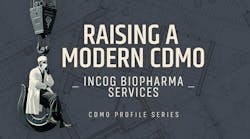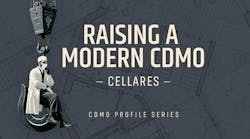How’s the relationship going? Remember the last time someone asked you that? Simple question, but one fraught with deeper implications; an innocent query that often results in an ad hoc referendum on just how things are going with one’s significant other. Casual, serious or somewhere in between, interpersonal relationships are tough to manage, but in the end generally valuable and worth the effort.
And so it goes, perhaps even more so with commercial relationships, especially those shared by drug owners and their contract services partners. Everyone knows that these are among the most complex and sensitive commercial relationships in all of industry, involving high stakes and high risk for both parties. But as Big Pharma turned the patent-cliff corner, they began to expect more from their relationships with Contract Pharma. And guess what? Contract Pharma responded, eager to share a deeper understanding with their drug owning partners.
As I pursued my reporting for this story, interviewing Contract Pharma’s leaders, listening to Big Pharma’s presenters at DCAT Week 2015 and Interphex, a common theme emerged: the understanding that for these relationships to be successful they have to be built on the familiar pillars of communication, sharing, giving and openness. I heard one presenter at DCAT week explain to the audience that as an organization, for GSK to get more value from their relationships with supply chain sponsors, it had to rebalance its engagement and risk management strategy to allow its contract partners deeper, more meaningful and earlier access to their proprietary drug-development plans.
I’ve heard this referred to as “opening the kimono” and have seen the wisdom of letting business critical partners see your “small clothes” to borrow a phrase from “Game of Thrones,” in a show of trust that recognizes the value a partner can bring. I’ve seen this tactic borne out successfully across numerous and highly technical, engineering-driven organizations. Such “openness,” however, should spring from a platform of trust and mutual interest, but both Big Pharma and Contract Pharma understand that their mutual interests have never been more closely shared.
As the industry continues to cope with the political and regulatory forces and a competitive landscape that is demanding near perfection operationally, technical competence is paramount. But to achieve success, which everyone can agree is a successful, accessible, safe and effective new or generic drug, requires more of both partners. From where I sit, I am seeing both sides pursuing better relationships, employing technologies and other procedural and policy tools that support open communication and mutual trust, while managing and confronting the risk both partners must share. Can such a good thing ever last? In the case of this relationship, I’d say this couple has a better chance than most.





